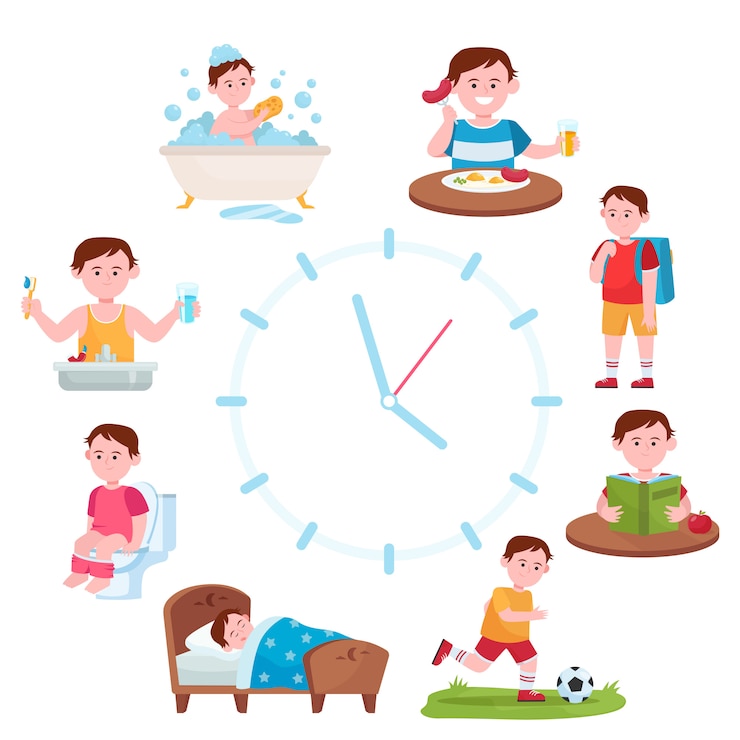
Here’s a revised version with improved readability and a more natural tone:
### Not Just for Adults: Why Kids Need Mental Health Days Too
Everyone needs a break sometimes, and that includes kids. The pressures from school, friends, and activities can become overwhelming without some downtime to recharge. Keep reading to learn about 10 activities recommended by a mental health professional that can help restore emotional balance for your child.
### If You’re Considering a Mental Health Day for Your Child
It’s normal to wonder what a mental health day for your child would entail. Many parents aren’t sure how to structure such a day. The good news is, it doesn’t have to be complicated or costly. While your child might be tempted to spend the day glued to their screens, engaging in a few structured activities can provide a more refreshing and beneficial reset.
Start the day by discussing your expectations together and allowing your child to help choose from the following activities. This conversation can set a positive tone and guide them toward feeling calm and confident again.
### Connect and Listen
The single most impactful thing you can do for your child is to connect with them on an emotional level. This means giving your full attention and really listening to understand, not just to reply. When parents respond with warmth and sensitivity, children are more likely to develop trusting relationships, which boosts confidence and emotional health.
For younger children, connection often happens through play rather than conversation, so be mindful of how your child usually opens up.
### Encourage Physical Activity
Movement is fantastic for mental wellness. Engaging in physical exercise releases endorphins and reduces the stress hormone cortisol, acting as a natural mood booster. Studies highlight that children who exercise more tend to feel less stressed and have a more positive outlook.
Consider suggesting a joint activity to move your bodies, letting your child have some choice if they’re feeling up to it.
### Invite Quiet Reflection
Life can sometimes feel like a treadmill—constant and without pause. To truly reflect, your child needs some quiet time. Silence provides a chance for introspection and daydreaming, offering time to focus on what’s most important.
A simple way to achieve this is to provide an open, unscheduled period for your child to explore.
### Harness the Power of Play
Play isn’t just for fun; it’s how children learn and relieve stress. Whether it’s imaginative play or games, it gives children a sense of control and predictability, two key elements for reducing stress.
Don’t be shy—get involved and let your child lead their playtime.
### Explore Journaling
Journaling provides a safe space for children to express emotions and explore thoughts they may find difficult to articulate. It can also help them set goals and solve problems.
Use emotion-themed flashcards to help prompt your child in capturing their feelings on paper.
### Unleash Creativity with Art
Creating art is a valuable way for children to express themselves and find calm. Offering an inviting space with various art materials can prompt them to explore and channel their emotions through creativity.
### Relax with Music
Music has a soothing effect on children, helping them manage feelings and promote self-regulation. While upbeat music can energize, slower tunes can help calm and center them.
There are numerous relaxation playlists available on platforms like Spotify.
### Nourish with Healthy Foods
Using this day to introduce healthier eating habits can positively affect your child’s mood. Nutrient-rich foods can play a role in improving both their mental and physical well-being.
Cooking a nutritious recipe together can be an enjoyable and beneficial activity.
### Practice Mindfulness
Mindfulness exercises, like meditation, can help shift your child’s focus away from stress and towards calmness and clarity. Studies indicate that practicing mindfulness can improve focus, academic performance, and overall well-being while reducing stress and disruptive behavior.
Look into tools designed for mindfulness exercises with children.
### Spend Time in Nature
Being in nature can significantly reduce stress and enhance emotional well-being. Whether you take a walk or simply enjoy an outdoor activity, exposure to natural environments can lower stress hormones and improve mood.
Consider taking an indoor activity, like reading or a board game, outside for a change of scenery.
In conclusion, mental health days can be as beneficial for children as they are for adults. These activities will help your child relax, reflect, and reset, making them a valuable addition to their routine.
Explore more articles on this theme:
– “Kids Need Mental Health Days: 9 Misconceptions That Need to Change”
– “7 Surefire Signs Your Child Needs a Mental Health Day”
Additional resources you might enjoy:
– “75 Calm Down Strategies for Kids”
– “The Best Mindset for Parenting an Emotionally Intense Child”
– “10 Insights of Remarkable Parents from a Family Therapist”
– “Easy Ways to Bond with Your Child”
Originally published on July 12, 2021, this content has been updated for clarity and relevance.



